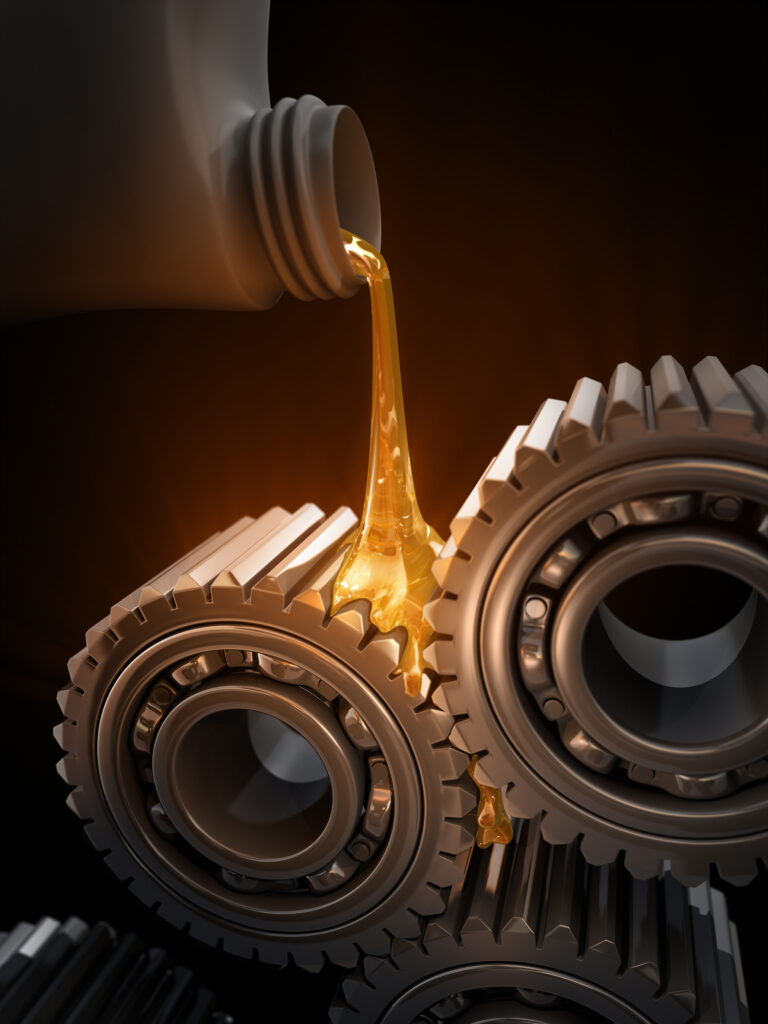
What is a hot bearing?
July 5, 2023 | By Douglas Martin
 Photo: Petrovich9/Getty Images Plus/Getty Images
Photo: Petrovich9/Getty Images Plus/Getty Images 
Photo: Petrovich9/Getty Images Plus/Getty Images
Recently, a customer said that their bearing was running hot, at about 80C. Although this seems high, it is not excessively hot. We discussed some of the conditions such as speed, lubricant type, and load, and bearing type. It was reported as a medium load, so calculations suggested that grease was not the best choice for a lubricant (based on the combination of bearing type, speed, and degree of load).
However, if the load was classed as low, it would have been acceptable with grease as a lubricant. The bearing is getting to the upper limit as to whether grease or oil should be used, and would be expected to run at the observed temperature. There is classification of operating temperature ranges when calculating a grease life/re-lubrication interval. That range is: low – 47 to 63 C, moderate – 63 to 78 C, high – 78 to 93 C, and very high – 93 to 107C.
Grease operating temperature classifications
As a rule, there are three operating zones of a grease lubricant. These zones are: reliable performance, unreliable performance (OK for short term), and too high a temperature for the grease.
Typical lithium/mineral oil greases (often referred to as ‘EP2’) can provide predictable performance up to about 110C. Lithium complex greases, whether mineral or synthetic are in the 140C range as is polyurea/mineral oil greases. For short periods, lithium complex, calcium complex, and polyurea greases can operate for short periods up to about 240C, but in that range 140C to 240C, the grease performance is not predicable.
Not all grease manufacturers publish data, they may only say that the grease is good to 240C (without the caveat that in these upper temperatures the performance of the grease may not be predicable (behave as expected)).
Of interest, SKF temperature classifications for greases are:
• “Low” Temp Grease as typically used for operating temperatures under 50C.
• “Medium” temperature greases are typically used for operating temperatures 50C to 100C.
• “High” Temperatures Grease is used for Temperatures over 100C and under 210C.
Changes in temperature?
There are cases where an 80C operating temperature may not be acceptable. Such as when the operating temperature is normally at 30C and then you find it at 80C. Or the last assembly ran at 30C and after an overhaul or repair, it is now operating at 80C.
Factors that can contribute to high bearing temperatures include excessive load, inadequate lubrication, and improper installation. Monitoring the bearing temperature regularly and ensuring proper maintenance can help prevent overheating and extend the life of the bearing.
Bearing temperature
There are several steps that can be taken to reduce the temperature of a bearing.
Proper lubrication: Ensuring that the bearing is adequately lubricated with the correct type and amount of lubricant is critical to reduce friction and heat buildup.
Proper installation: Ensure that the bearing is properly fitted to the shaft and housing and that the bearing seats are concentric. Ensure that machine components are in alignment (i.e., coupling).
Monitoring load: Excessive loads can cause bearings to overheat, so be aware of how process changes affect the bearing operating conditions.
Heat sinks: Heat sinks can be installed to draw heat away from the bearing and dissipate it into the surrounding environment. An example of a heat sink is a heat flinger on a fan shaft assembly.
Using circulating oil lubrication: The use of oil circulation allows for the removal of heat by the lubricant as it flows through the bearing. A cooling radiator could be used or simply the volume of oil in the reservoir may be sufficient for temperature control.
High temperature bearing
What are the temperature limiting factors with standard industrial bearings? The lubricant used; seal material (if the bearing is sealed) is typically Nitrile which is limited to 100C; cage material, metallic cages (brass and steel) do not limit bearing operating temperatures, however, polyamide, phenolic and PEEK cages do have temperature limits that are usually below the material limits of the bearing steel; and bearing steel – depending on the bearing size and type, the heat stabilization temperatures range from 120C to 200C.
Often, the question “can I get a high temperature bearing without every stating what that temperature is” is asked. Some believe that 80C to 120C are “high temperatures”, but standard industrial bearings can have operating temperatures up to 200C (given that you can find an appropriate lubricant), and are within the possible operating temperatures of normal industrial bearings.
There are high temperature bearings that are typically made from materials which can withstand the elevated temperatures, such as high-temperature steel, ceramic, or special polymers. These bearings can operate at temperatures of 250C to 350C. They incorporate specialized lubrication systems and seals that can operate at high temperatures without breaking down or degrading; however, the ability to run at high temperatures comes at a cost, they are limited in their speed ability.
For industrial bearings, the limiting temperature is based on the lubricant used and/or the sealing system than the
bearing itself.
________________
Douglas Martin is a heavy-duty machinery engineer based in Vancouver. He specializes in the design of rotating equipment, failure analysis, and lubrication. Reach him at mro.whats.up.doug@gmail.com.
